My earliest versions of Porter were extremely minimalist, with no volume control, not even a preamp. It was tiny, and sounded pretty good for playing clean. v1 was based around a Texas Instruments TPA6111A2 headphone amp, which I liked for its low power consumption, shutdown mode, stereo output, and decent fidelity. Schematic snippet below (the rest is just the battery charger, which isn't that interesting).
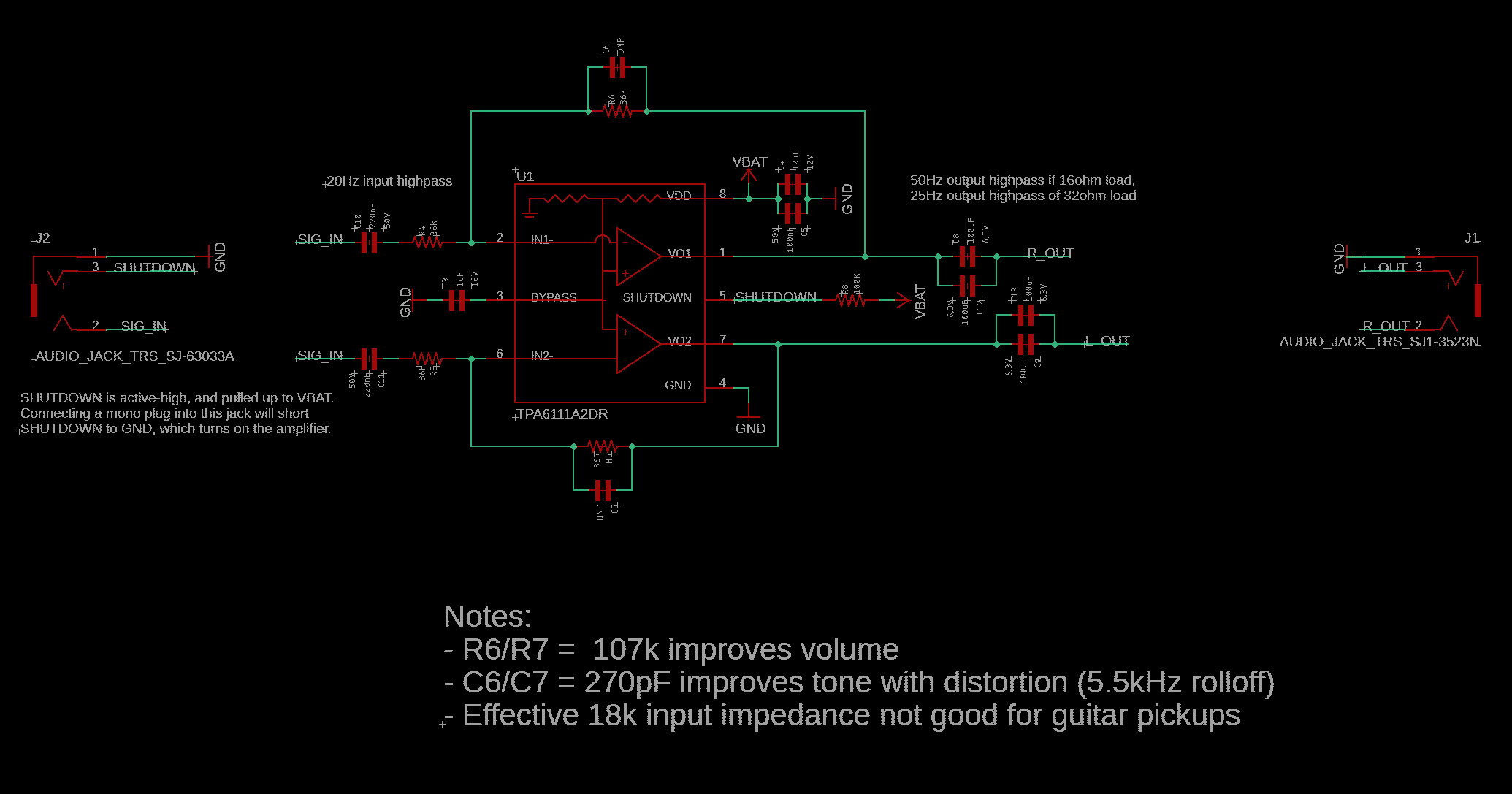
However, the design of the amp required relatively low input resistor values, resulting in excessive loading of the guitar pickups (which kills your tone). I also wasn't too excited about the large DC-blocking caps it required (mostly from a cost perspective, as I was using ceramics).
So for v2 I tried the Analog Devices SSM2211, which is a mono headphone amp. The bridged mono output eliminated the need for DC-blocking caps, and the amp allowed for a higher input impedance of 100k ohms. It still had a shutdown mode and decent fidelity. It's a good chip to use for a super minimalist headphone amp, though note that even 100k is still a little low for guitar pickups. Schematic snippet below.
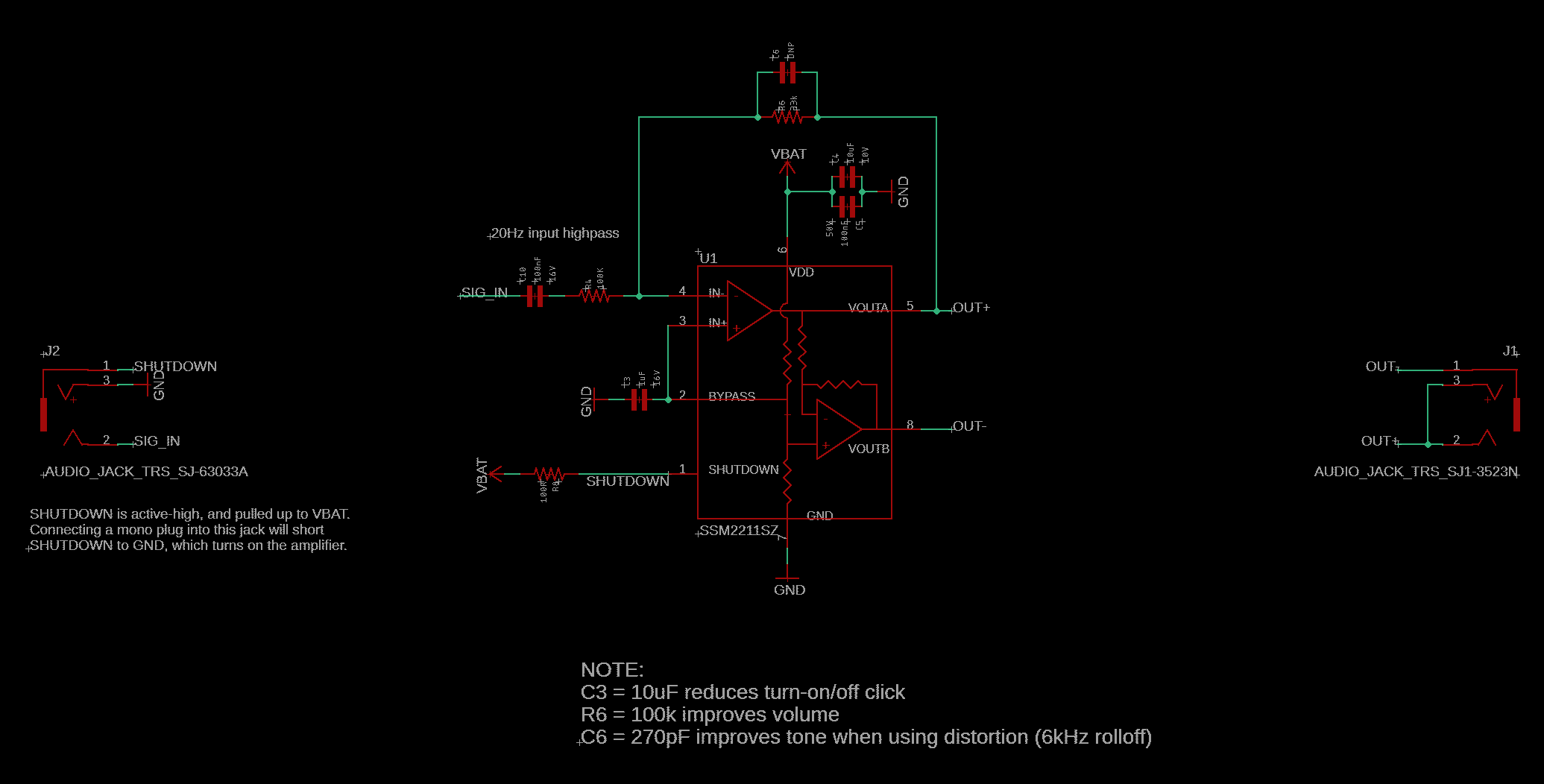
I built up a few of these units and wanted to give them to my friends to beta test and tell me which they preferred. But to keep them from getting damaged, I really wanted to put them in a case. I had just gotten my first 3D printer (a Creality Ender 3 v2), so this seemed like a good starter project! Since I designed my boards in EAGLE, I was able to import them into Autodesk Fusion and start designing a case around them.
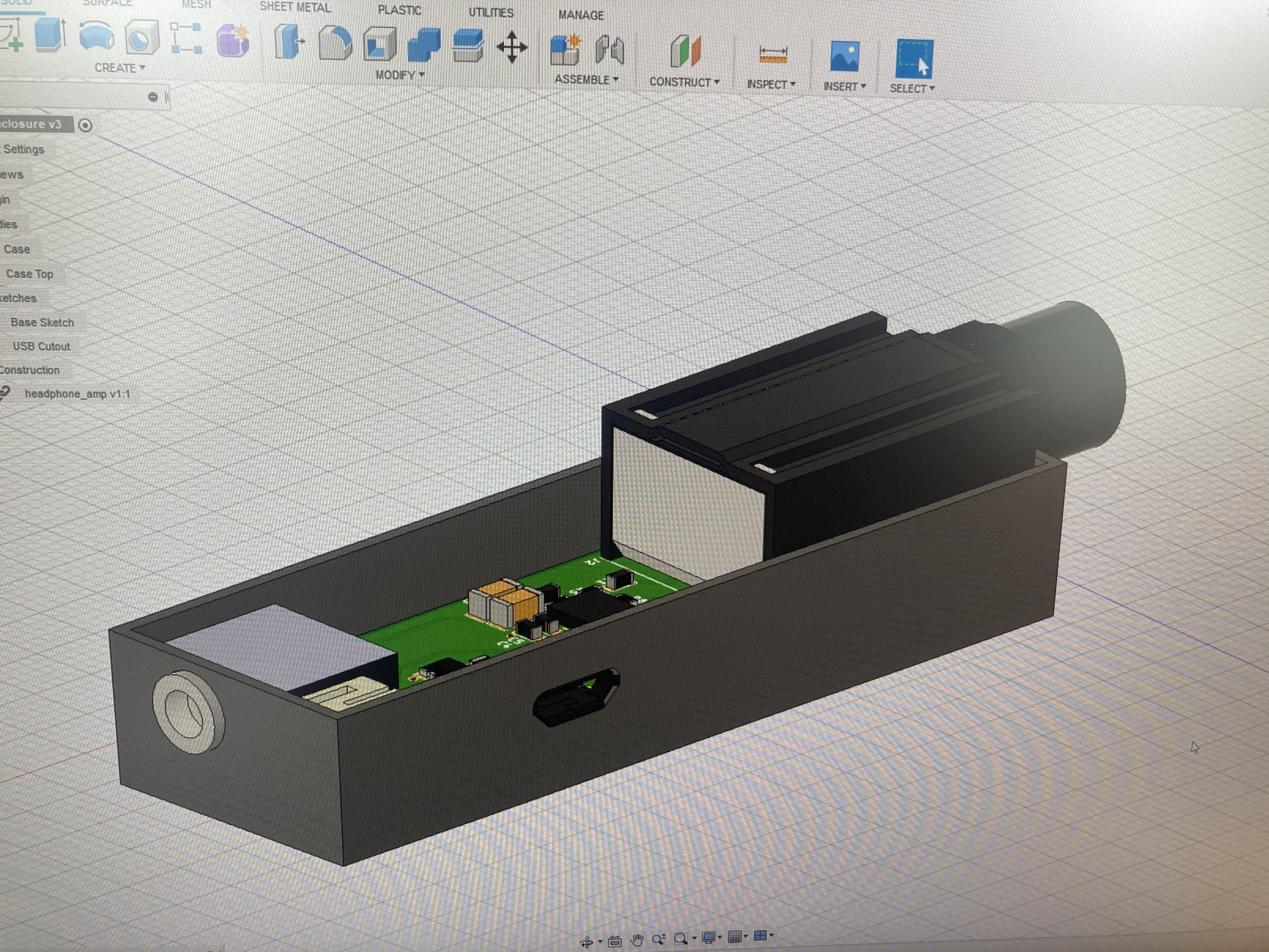
I quickly learned what it means to overconstrain yourself by putting connectors on 3 different faces... thankfully the plastic has some give to it, so I was able to still get the boards into the enclosure. I split the enclosure into two halves and added little bumper rails that would lock together securely enough to stay together, but not so securely that you can't separate them.
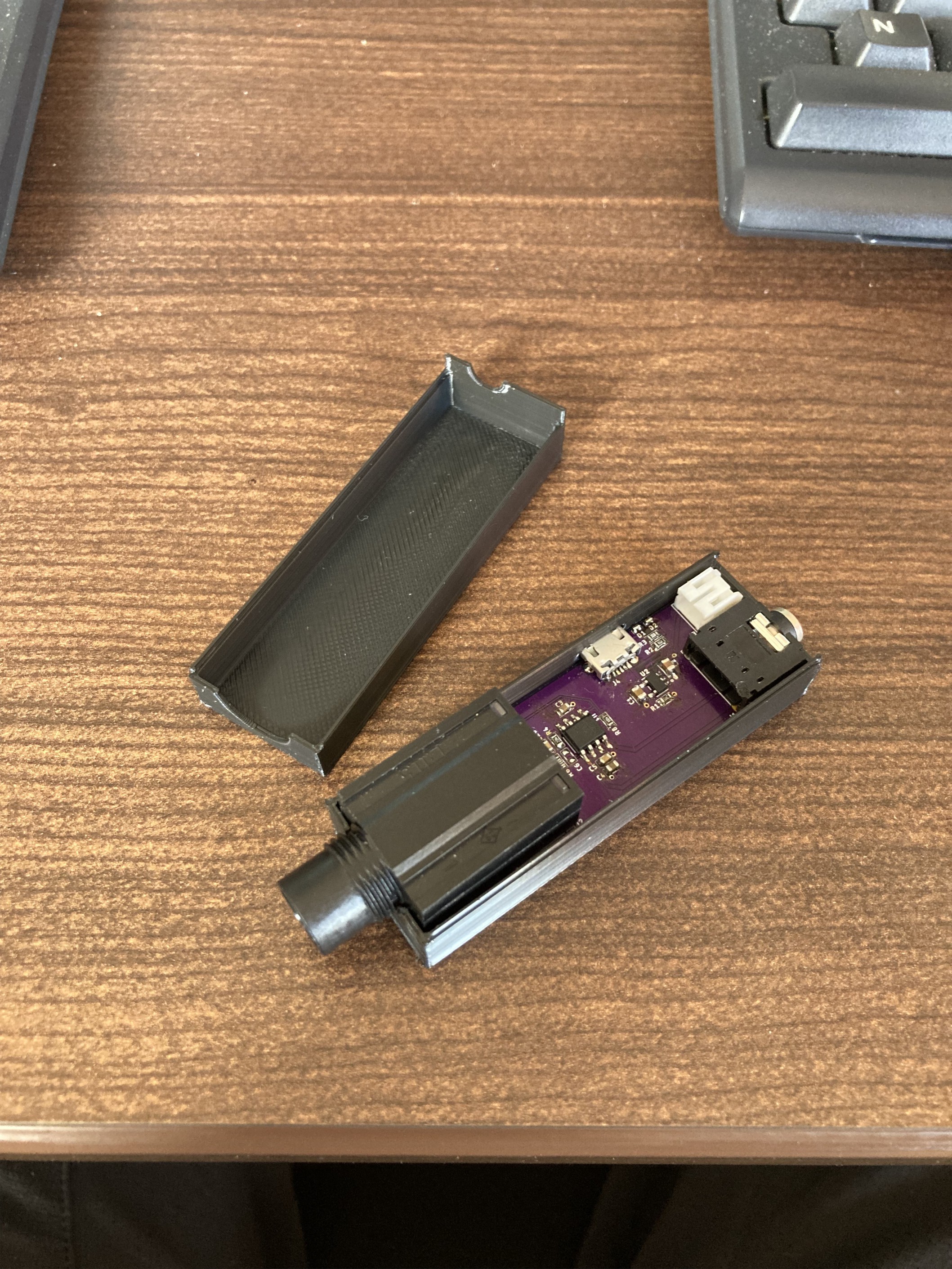
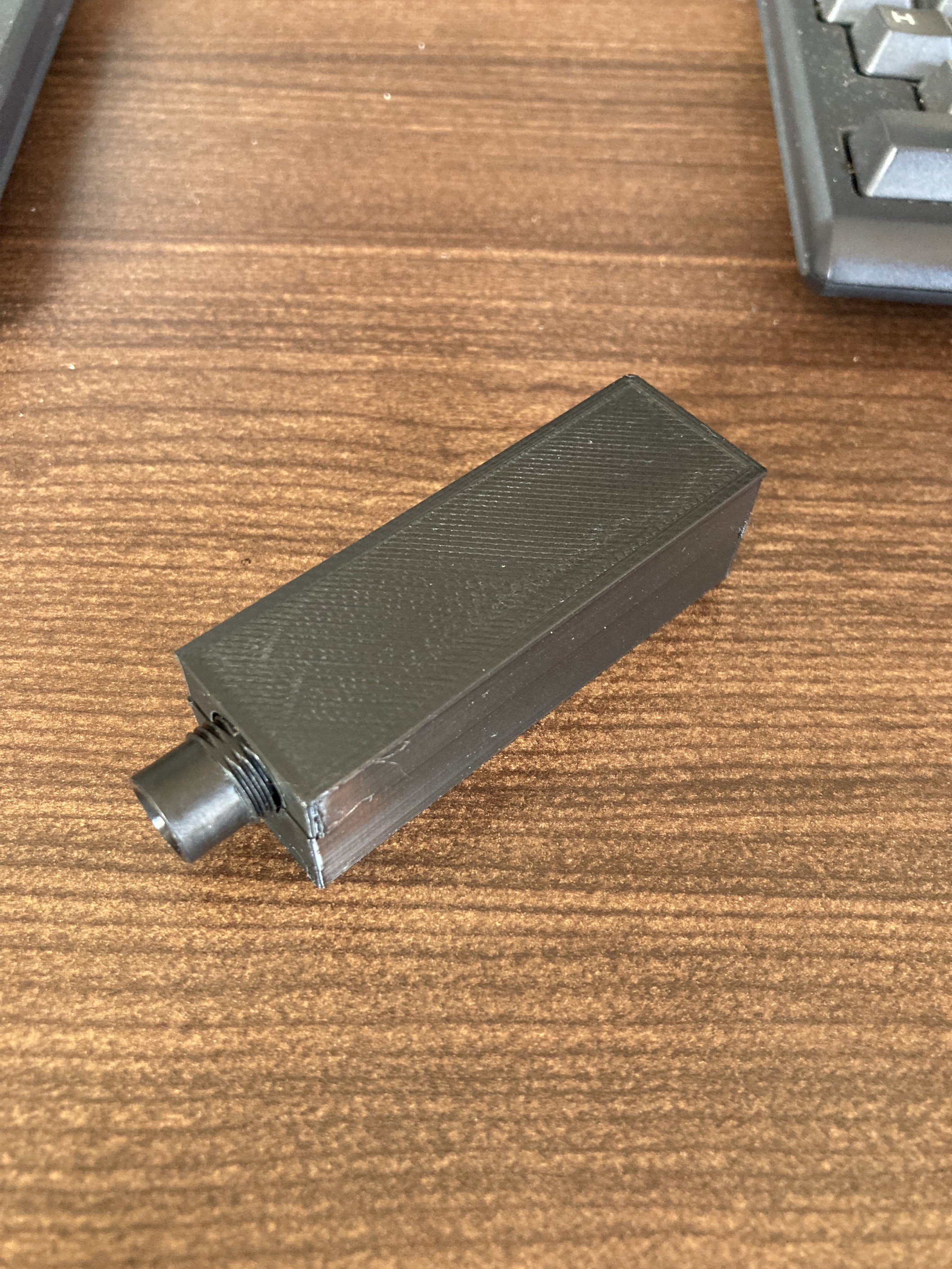
And those were the prototypes I started handing out for beta testing! The results came back with people pretty evenly split between the two versions. However, one piece of feedback was very consistent: please add volume control! It turns out a guitar's tone can change noticeably when using the passive volume control that's built into it (which is what I was relying on for this super-simple amp). I also wasn't particularly confident in my enclosure design for long-term use (the rails started cracking after a few cycles of assembly and disassembly), so I started looking into some off-the shelf options. More on that in my next post!
 Gavin
Gavin
Discussions
Become a Hackaday.io Member
Create an account to leave a comment. Already have an account? Log In.